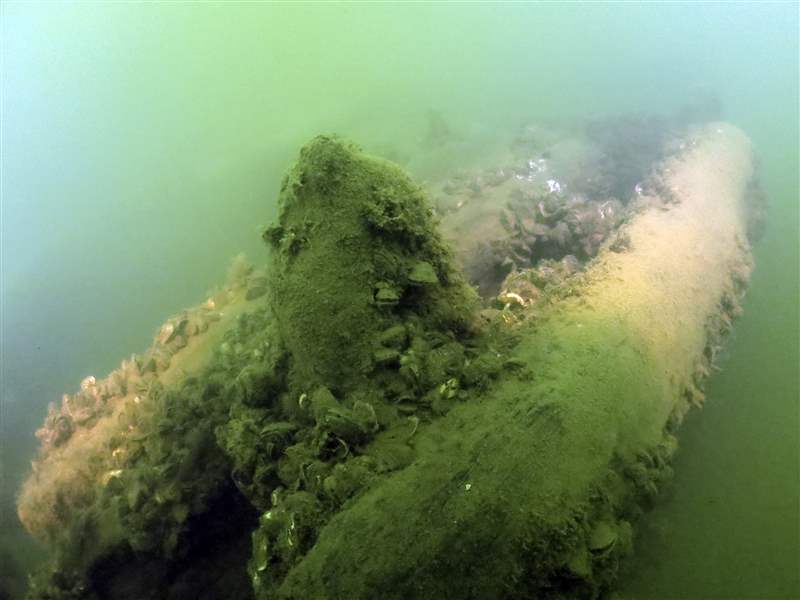
Researchers believe they've found a 200-year-old shipwreck
10/5/2018
Hull side of the ship.
LAKE ERIE — The results are in, and the National Museum of the Great Lakes believes it has identified the oldest shipwreck located in Lake Erie.
Archaeological Director Carrie Sowden led a team of divers this summer to an unknown shipwreck initially found in 2015. Ms. Sowden concludes with 75 percent certainty the wreckage belongs to the Lake Serpent, a schooner that sank in Lake Erie east of Kelleys Island in 1829.
The team of eight volunteers spent 33 hours over eight days examining the shipwreck. They narrowed the possibilities down to 11 based on size and location of the vessel, then to three before reaching a verdict.
Ms. Sowden uses an intrinsic process to put the pieces together.
“There are always clues,” she said. “Whether they’re historical or something from a document or newspaper, you’ve got some knowledge of what should theoretically be there. So when you look at a shipwreck and there’s no name board on it, you go back and utilize these clues that you can find and see if they match up with the shipwreck you’re looking at.”
The Lake Serpent was about 50 feet long and sank between the islands and Cleveland, closer to Kelleys Island.
WATCH: Researchers hunt for the sunken Lake Serpent
The ship’s enrollment papers show the Lake Serpent’s defining feature was a carved wooden figurehead of an actual serpent found in Lake Erie. One of the divers snapped a picture of what is believed to be the head.
“I don’t know that it really looks like a serpent, but it’s definitely a carved and human-worked piece of wood, which is not common on the Great Lakes,” Ms. Sowden said. “If it’s a lake serpent — and we think it is — what did they think a lake serpent looked like? We’re still interested in what that representation is.”
The wreckage was first discovered by Tom Kowalczk, a member of the Cleveland Underwater Explorers. The research group searches for shipwrecks and collaborates with the museum.
Mr. Kowalczk nearly disregarded what his SONAR device told him.
“I looked at it for a second and didn’t even bother going back, but then I did take a closer look at it,” Mr. Kowalczk said. “I was very close to missing it because I didn’t get a signal.
“I didn’t have any information about a wreck in that location. Based on historical record, it was starting to look more and more like a very early vessel.”
The Lake Serpent set out from the islands carrying stone. Ms. Sowden said the islands didn’t start quarrying stone until the 1830s, another factor used to determine the ship’s identity. The team found rounded boulders in the ship’s cargo, indicating the stone had not been quarried.
Ms. Sowden said bodies of the Lake Serpent’s crew washed up on the shore in Lorain County about a month after it disappeared.
Divers plan to make another excursion in 2019 for further research.
“When you look something 200 years old, it takes your breath away,” Mr. Kowaclzk said. “It kind of leaves you with this feeling of gratitude and satisfaction.”
Contact Jay Skebba at jskebba@theblade.com, 419-376-9414, or on Twitter @JaySkebba.